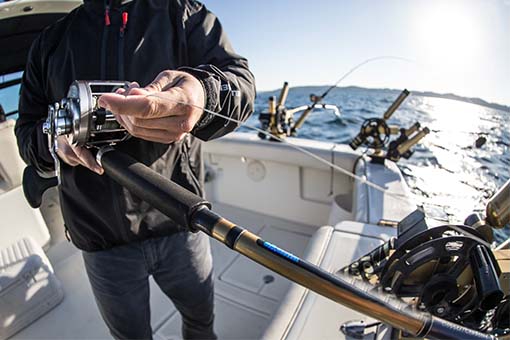Heading for Deep Sea Waters
Embarking on a deep sea fishing adventure is an exhilarating endeavor, especially when targeting pelagic creatures like marlin and tuna. These creatures are challenging to hook and even more challenging to reel in. For beginner anglers, learning the ropes is essential. Here are 10 tips to help ensure a successful deep sea fishing voyage.
1. Ensure All Gear is in Top Condition
Before addressing fishing gear, make sure all safety gear is in perfect condition. Nicks in the line, jerky reel drags, and rusty hooks can hinder success. Safety gear is equally important; nothing will cut a trip short faster than an accident. Check out the Boating Safety Guide and perform a full safety check before dealing with rods, reels, and lines.
2. Gather Current Intel
Pelagics move quickly, and outdated data could result in fishing miles away from them. Gather intel from docks, local tackle shops, and current online reports, such as those by FishTalk (for the Mid-Atlantic region) or BDOutdoors (for the west coast). Many anglers also use SST (sea surface temperature) charts to find temperature breaks and plankton concentrations before departing.
3. Look for Visible Structure
Identify any floating objects on the water’s surface, such as wood boards, weed paddies, or commercial fishing floats, as they can attract fish. Also, look for color changes indicating where different water bodies collide or rips where small standing waves form. The ocean is vast, and any anomaly could signal a life-filled oasis.
4. Be Quick to Change the Pace
If fish aren’t biting, change tactics. When trolling, try speeding up or slowing down. With bait fishing, move spots or change presentations. If current methods aren’t working, don’t stick with them just because others recommend them or because they were found online.
5. Focus on Multiple Hook-Ups
When schooling fish strike, try to turn one strike into multiple strikes. Instead of diving for the rod, jig another to give the bait additional action. Turn the boat to pass other baits over the strike spot, and always have a pitch-bait ready to deploy for any following fish. Make the most of every opportunity.

6. Catch What’s Available
Sometimes, anglers focus too much on “glory fish” like billfish and tuna, ignoring other species. If a weedline or other structure is spotted, it may hold mahi-mahi or other fish. Change tactics to get a bite, even if it’s not the target species of the day.
7. Use Fluorocarbon Leaders and Ball-Bearing Swivels
Invest in fluorocarbon leaders and ball-bearing swivels, even though they are more expensive. Fluorocarbon is less visible, and ball-bearing swivels work better than cheaper barrel swivels. Given the effort and expense of ocean fishing, don’t skimp on the basics.
8. Book a Charter First
Booking a charter can provide invaluable knowledge about rigging, baits, and tactics. While catching a pelagic fish on a personal boat is satisfying, learning from professionals can accelerate the learning curve significantly.
9. Mark Every Bite on GPS/Chartplotter
Mark each strike on the GPS/chartplotter immediately. This allows quick navigation back to productive spots and helps build a database of fishing hotspots over time.
10. Learn to Use Dredges and Teasers
Dredges and teasers are commonly used by professional boats to attract predators. Although they are expensive and add complexity, they significantly improve chances of success. Learn to deploy them to compete effectively offshore.
These tips won’t make anyone an expert deep sea angler overnight, but they will improve the chances of success on the next offshore trip. Time and experience are essential for mastering deep sea fishing, but these tips provide a solid foundation.
Image/Source: DiscoverBoating





